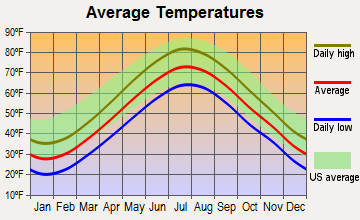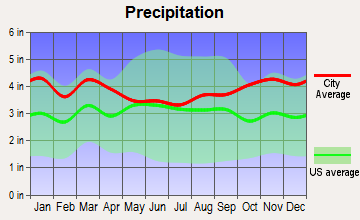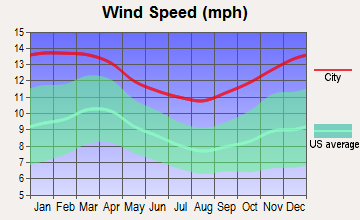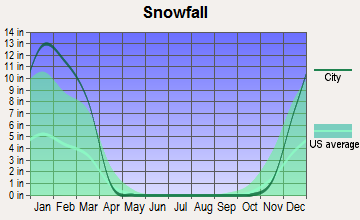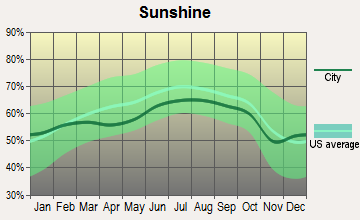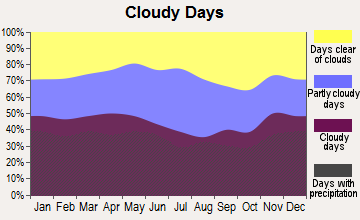 Brooklyn, NY
Brooklyn, NY
 Boston, MA
Boston, MA
Brooklyn, NY and Boston, MA, both offer unique lifestyles, opportunities, and experiences for residents and tourists alike. While Brooklyn is known for its vibrant urban life, diverse culture, and thriving industries, Boston boasts rich history, renowned educational institutions, and a dynamic sports culture. Each city has its unique facets when it comes to crime/safety, weather, cost of living, education, work and economy, infrastructure, industries and occupations, real estate, neighborhoods, transportation/public transit/commuting, taxes, culture/food, sports teams, geographical conditions, and health care. Understanding these facets is crucial when contemplating relocation or a visit.

 | US cities with most identifiable/unique/robust local Black culture (tiered) (753 replies) |
 | Chicago: Closer in stature to Boston or New York? (1056 replies) |
 | San jose vs. Sacramento vs. Oakland (125 replies) |
 | What does New York lack despite its size that other Acela metros have? (254 replies) |
 | North America 20 fastest growing cities (51 replies) |
 | Top 10 most urban contiguous 50 sq miles (681 replies) |
 Brooklyn, NY and
Brooklyn, NY and  Boston, MA : 187.9 miles
Boston, MA : 187.9 miles
Brooklyn's population is larger by 288%. The population of Boston has grown by 65,635 people (11.1%) during that time.
| Population | ||
| Type | Brooklyn | Boston |
|---|---|---|
| Population | 2,538,705 | 654,776 |
| Female / male percentage | 53.1% / 46.9%
|
51.8% / 48.2%
|
According to recent data, Boston has a higher crime rate than Brooklyn, although both cities continuously implement measures to improve citywide safety. Brooklyn's notable neighborhoods, such as Dumbo and Brooklyn Heights, have exceptionally low crime rates. Comparatively, neighborhoods in Boston like Beacon Hill and Back Bay also enjoy significantly lower crime rates. Both cities have well-resourced police departments that work proactively to ensure residents' safety and security.
The cost of living is higher in Brooklyn, NY, than in Boston, MA — housing being the largest factor. However, the average income also tends to be higher in Brooklyn, somewhat countering the cost of living. Other costs, such as groceries and health care, are also marginally higher in Brooklyn. Still, both cities offer a range of options for groceries and healthcare, meaning careful choices can mitigate these costs.
New York has a higher state income tax, with rates ranging from 4% to 8.82%, based on income. Massachusetts has a flat rate of 5.05% for all income levels. In addition to state tax, New York City levies its own income tax, with rates ranging from 3.078% to 3.876%.
Property taxes vary within both cities, but generally, rates are higher in Boston. In Brooklyn, the average rate is about 0.63%, while in Boston, property owners are looking at a rate averaging 1.11%. Both cities offer numerous housing types and price points to suit budgets of different magnitudes.
New York City has a higher total sales tax rate at 8.875%, compared to Boston's 6.25%. This includes state, county, and city sales taxes. It's crucial for consumers to factor this tax difference into their budget, especially when purchasing high-value items.
| Income | ||
| Type | Brooklyn | Boston |
|---|---|---|
| Estimated median household income | $67,567 | $79,283 |
| Estimated per capita income | $39,536 | $50,337 |
| Cost of living index (U.S. average is 100) | 185.4 | 143.8 |
If you make $50,000 in Boston, you will have to make $64,465 in Brooklyn to maintain the same standard of living.
Brooklyn, located on the western tip of Long Island, offers miles of waterfront and several iconic beaches. Unlike landlocked Boston, Brooklyn residents enjoy the coastal benefits of New York Harbor and the Atlantic Ocean. Boston, on the other hand, is marked by its scenic Charles River, historic harbor, and numerous green parks.
| Geographical information | ||
| Type | Brooklyn | Boston |
|---|---|---|
| Land area | 70.6 sq. miles | 48.4 sq. miles |
| Population density | 35,956 people per sq. mile | 13,521 people per sq. mile |
 Brooklyn, NY
Brooklyn, NY
 Boston, MA
Boston, MA
Both cities are renowned for their educational offerings. Boston is home to world-class universities like Harvard and MIT, making it an outstanding city for higher education. Conversely, Brooklyn hosts CUNY Brooklyn College and Brooklyn Law School, among other institutions, while being in close proximity to institutions like Columbia and NYU. Both cities offer high-quality public and private schools at primary and secondary levels.
| Education level (25-year-olds and older) | ||
| Type | Brooklyn | Boston |
|---|---|---|
| Bachelor's degree or higher | 21.8% | 52.5% |
| Graduate or professional degree | 8.8% | 25.7% |
| High school or higher | 68.8% | 88.1% |
Brooklyn's economy is diverse, with finance, health care, and professional services dominating. Similarly, Boston's economy is bolstered by sectors like biotechnology, finance, and education. Both cities offer numerous employment opportunities with competitive salaries, making them attractive for job seekers. Unemployment rates in both cities are on par with the national average.
In Brooklyn, the largest employers include JPMorgan Chase, Citigroup, and Verizon, reflecting the borough's strong financial and tech industries. Boston's largest employers include Massachusetts General Hospital, Brigham and Women's Hospital, and Harvard University, reflecting the city's strong healthcare and educational sectors.
In Brooklyn (Kings County), 82.1% voted for Democrats and 16.9% for Republicans in 2012 Presidential Election. In Boston (Suffolk County), 77.4% voted for Democrats and 20.8% for Republicans.
Brooklyn and Boston share a similar climate, featuring cold winters and mild to hot summers. However, Boston's winters tend to be harsher, with more snowfall compared to Brooklyn. Brooklyn residents enjoy a more moderate climate but note that late summer can bring high humidity. The coastal location of both cities provides some respite from the inner-city heat during the summer.
| Weather and climate | ||
| Type | Brooklyn | Boston |
|---|---|---|
| Temperature - Average | 55.1°F | 50.6°F |
| Humidity - Average morning or afternoon humidity | 68.7% | 69.9% |
| Humidity - Differences between morning and afternoon humidity | 26.1% | 23.1% |
| Humidity - Maximum monthly morning or afternoon humidity | 76.8% | 78% |
| Humidity - Minimum monthly morning or afternoon humidity | 50.7% | 55% |
| Precipitation - Yearly average | 46.5 in | 46.3 in |
| Snowfall - Yearly average | 53.4 in | 88.3 in |
| Clouds - Number of days clear of clouds | 16.7% | 16.4% |
| Sunshine amount - Average | 60.2% | 63.7% |
| Sunshine amount - Differences during a year | 20% | 20% |
| Sunshine amount - Maximum monthly | 64% | 68% |
| Sunshine amount - Minimum monthly | 44% | 48% |
| Wind speed - Average | 10.6 mph | 12.5 mph |
| Natural disasters | ||
| Type | Brooklyn | Boston |
|---|---|---|
| Tornado activity compared to U.S. average | 56.4% | 55.3% |
| Earthquake activity compared to U.S. average | 30.8% | 26.6% |
| Natural disasters compared to U.S. average | 17% | 33% |
Both cities have robust public transportation systems. Brooklyn, as part of NYC, benefits from the MTA, one of the largest public transit systems globally, offering subway, bus, and ferry services. Boston's Massachusetts Bay Transportation Authority (MBTA) provides bus, subway, trolley car, and boat services. Both cities also have bike-sharing programs and extensive pedestrian-friendly areas.
| Transport | ||
| Type | Brooklyn | Boston |
|---|---|---|
| Amtrak stations | 0 | 3 |
| Amtrak stations nearby | 3 | 3 |
| FAA registered aircraft | 149 | 224 |
| FAA registered aircraft manufacturers and dealers | 2 | 4 |
Brooklyn's real estate market is more expensive, with a mix of historic brownstones, condos, and luxury apartments. Boston has more affordability in its housing market, but it is also a city of neighborhoods, with prices varying greatly depending on the area. Both cities have an active rental market.
Brooklyn boasts a diversity of vibrant neighborhoods like Dumbo, Brooklyn Heights, and Williamsburg, appealing to a wide variety of lifestyles. Boston, home to historic neighborhoods such as Beacon Hill, the Back Bay, and Fenway, offers a unique blend of historical charm and urban convenience. Both cities offer neighborhoods that cater to families, singles, professionals, and students alike.
| Houses and residents | ||
| Type | Brooklyn | Boston |
|---|---|---|
| Houses | 930,866 | 307,025 |
| Average household size (people) | 2.7 | 2.3 |
| Houses occupied | 880,727 (94.6%) | 271,941 (88.6%) |
| Houses occupied by owners | 238,290 (27.1%) | 94,497 (34.7%) |
| Houses occupied by renters | 642,437 (72.9%) | 177,444 (65.3%) |
| Median rent asked for vacant for-rent units | $1,589 | $2,632 |
| Median price asked for vacant for-sale houses and condos | $1,621,117 | $1,040,328 |
| Estimated median house or condo value | $793,300 | $659,700 |
| Median number of rooms in apartments | 3.6 | 3.9 |
| Median number of rooms in houses and condos | 5.2 | 5.4 |
| Renting percentage | 72.3% | 66.1% |
| Housing density (houses/condos per square mile) | 13,184 | 6,340.1 |
| Household income disparities | 48.5% | 48.2% |
| Housing units without a mortgage | 29,251 (32.9%) | 1,250 (1.8%) |
| Housing units with both a second mortgage and home equity loan | 183 (0.2%) | 7,686 (11.2%) |
| Housing units with a mortgage | 59,793 (67.1%) | 67,144 (98.2%) |
| Housing units with a home equity loan | 4,512 (5.1%) | 218 (0.3%) |
| Housing units with a second mortgage | 5,098 (5.7%) | 9,540 (13.9%) |
| Housing units lacking complete kitchen facilities | 1.5% | 1.4% |
| Housing units lacking complete plumbing facilities | 1.7% | 0.7% |
Both cities boast thriving industries. In Brooklyn, healthcare, retail trade, and educational services dominate, offering varied opportunities. Boston's diverse economy includes a growing technology sector, with specialists in biotech and software services finding ample opportunities. In terms of occupations, both cities offer a mix of blue-collar and white-collar jobs, with a slight lean towards white-collar jobs.
Both cities boast high-quality healthcare systems. Brooklyn has over 30 hospitals and numerous healthcare facilities of NYC to its use. Boston, known as a global healthcare hub, is home to world-renowned hospitals like Massachusetts General and Brigham and Women's Hospital. The healthcare industry is a major sector in both cities, providing plenty of employment opportunities.
| Health (county statistics) | ||
| Type | Brooklyn | Boston |
|---|---|---|
| General health status score of residents in this county from 1 (poor) to 5 (excellent) | 3.4 | 3.5 |
| Average weight of females (lbs) | 161.8 lbs | 159 lbs |
| Average weight of males (lbs) | 185.6 lbs | 187.4 lbs |
| Residents visited a dentist within the past year | 67.1% | 74.7% |
| Residents exercised in the past month | 69.9% | 74.4% |
| Residents keep firearms around their homes | 4% | 4.1% |
| Adult residents drank alcohol in the past 30 days | 71.7% | 76.6% |
| Residents smoked 100+ cigarettes in their lives | 39.2% | 44.4% |
Brooklyn's infrastructure, characterized by historic brownstones and modern high-rises, generally outshines that of Boston. Both cities have invested extensively in infrastructure development, particularly in public transport and city beautification. However, Brooklyn edges out due to its integration with the larger New York City infrastructure network, offering an abundance of facilities and services.
| Infrastructure | ||
| Type | Brooklyn | Boston |
|---|---|---|
| Hospitals | 104 | 22 |
| TV stations | 29 | 22 |
| Bank branches located here | 271 | 146 |
| Bank institutions located here | 41 | 37 |
| Main business address for public companies | 9 | 60 |
| Drinking water stations with no reported violations in the past | 12 | 2 |
| Drinking water stations with reported violations in the past | 75 | 5 |
Culture and food scenes in both cities are diverse and vibrant. Brooklyn offers everything from high-end dining to ethnic cuisine, reflecting its multicultural residents. Its cultural institutions, like the Brooklyn Museum and various music and arts festivals, add to the borough's attractiveness. Boston, while also culturally rich, carries a deep historical legacy. The food scene is dominated by fresh seafood, local brews, and a burgeoning culinary landscape marked by top-rated restaurants and diverse street food.
Both cities have ultra-passionate sports fan bases. Brooklyn hosts the Brooklyn Nets (NBA) and the NHL’s New York Islanders. Boston is known for its powerhouse teams, the Celtics (NBA), Red Sox (MLB), Bruins (NHL), and the New England Patriots (NFL). The cities' sports rivalry is well-noted, making both exciting for sports enthusiasts.







